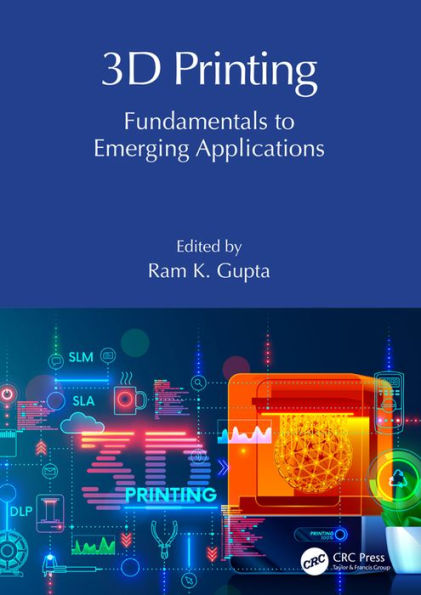3D Printing: Fundamentals to Emerging Applications discusses the fundamentals of 3D-printing technologies and their emerging applications in many important sectors such as energy, biomedicals, and sensors. Top international authors in their fields cover the fundamentals of 3D-printing technologies for batteries, supercapacitors, fuel cells, sensors, and biomedical and other emerging applications. They also address current challenges and possible solutions in 3D-printing technologies for advanced applications.
Key features:
- Addresses the state-of-the-art progress and challenges in 3D-printing technologies
- Explores the use of various materials in 3D printing for advanced applications
- Covers fundamentals of the electrochemical behavior of various materials for energy applications
- Provides new direction and enables understanding of the chemistry, electrochemical properties, and technologies for 3D printing
This is a must-have resource for students as well as researchers and industry professionals working in energy, biomedicine, materials, and nanotechnology.
3D Printing: Fundamentals to Emerging Applications discusses the fundamentals of 3D-printing technologies and their emerging applications in many important sectors such as energy, biomedicals, and sensors. Top international authors in their fields cover the fundamentals of 3D-printing technologies for batteries, supercapacitors, fuel cells, sensors, and biomedical and other emerging applications. They also address current challenges and possible solutions in 3D-printing technologies for advanced applications.
Key features:
- Addresses the state-of-the-art progress and challenges in 3D-printing technologies
- Explores the use of various materials in 3D printing for advanced applications
- Covers fundamentals of the electrochemical behavior of various materials for energy applications
- Provides new direction and enables understanding of the chemistry, electrochemical properties, and technologies for 3D printing
This is a must-have resource for students as well as researchers and industry professionals working in energy, biomedicine, materials, and nanotechnology.

3D Printing: Fundamentals to Emerging Applications
506
3D Printing: Fundamentals to Emerging Applications
506Related collections and offers

